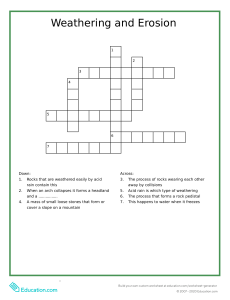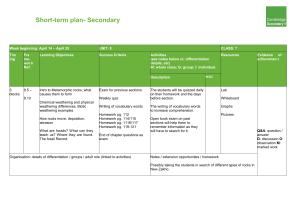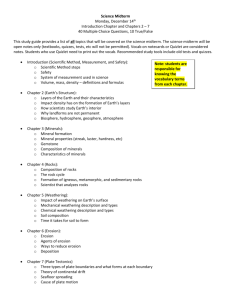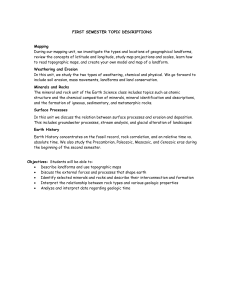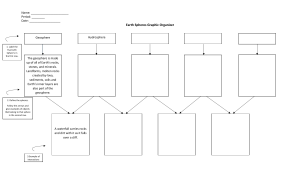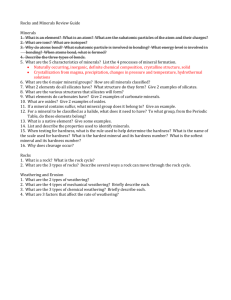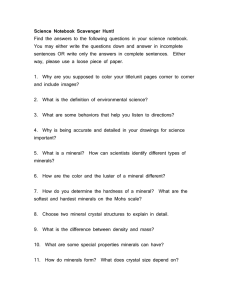Earth Science Midterm Study Guide
advertisement
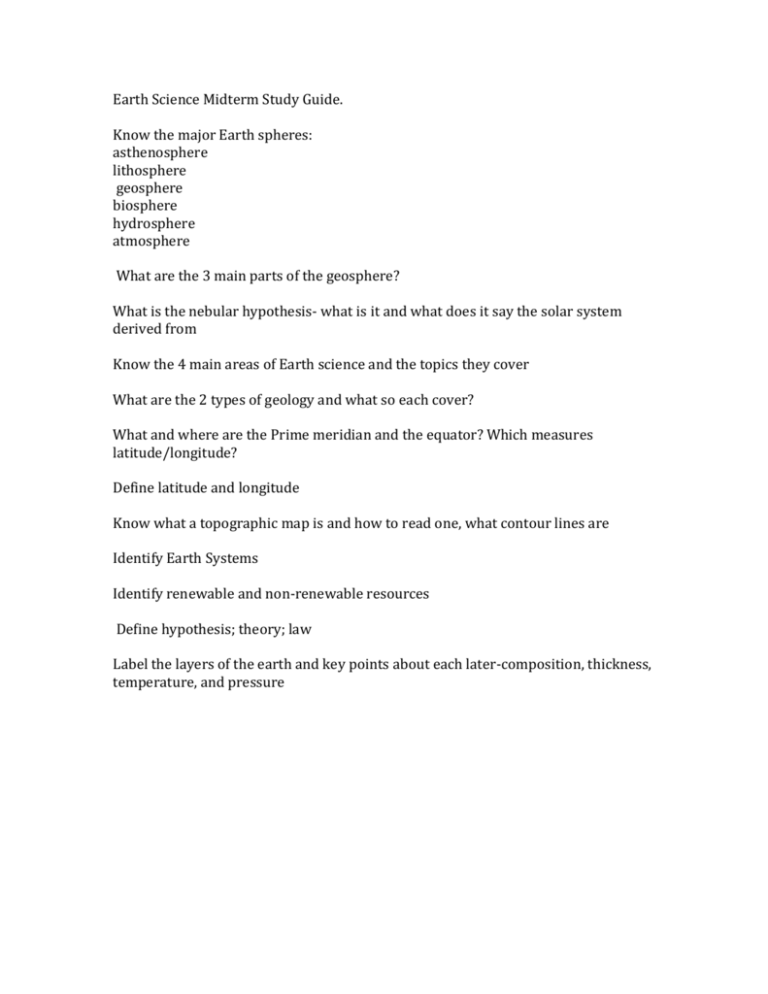
Earth Science Midterm Study Guide. Know the major Earth spheres: asthenosphere lithosphere geosphere biosphere hydrosphere atmosphere What are the 3 main parts of the geosphere? What is the nebular hypothesis- what is it and what does it say the solar system derived from Know the 4 main areas of Earth science and the topics they cover What are the 2 types of geology and what so each cover? What and where are the Prime meridian and the equator? Which measures latitude/longitude? Define latitude and longitude Know what a topographic map is and how to read one, what contour lines are Identify Earth Systems Identify renewable and non-renewable resources Define hypothesis; theory; law Label the layers of the earth and key points about each later-composition, thickness, temperature, and pressure Define and give examples of Element Atom Compound Mineral Give ways minerals can form Give ways minerals can be classified Identify ways you can tell if something is a mineral Identify several mineral groups How can we tell the difference between minerals-one from another - physical characteristics Identifying characteristics of rocks 3 major groups of rocks and examples of how each group is formed Characteristics of each of the 3 types of rocks Understand the processes in the rock cycle and the driving energy source in it Understand how to read this chart Define Chemical weathering Physical weathering Exfoliation Erosion Unloading Frost wedging What does the increase of surface area and temperature do to the rate of weathering? Major characteristics of soil Source of organic matter 3 horizons and what the composition is of each layer Types of mass movements and their triggers Steps to the Scientific method and what each entails in a lab Metric System o Prefixes; labels; converting Lab equipment Lab Safety rules
